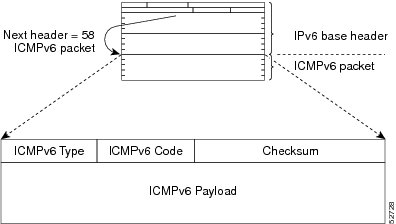Information About IPv6 MTU Path Discovery
IPv6 MTU Path Discovery
As in IPv4, path MTU discovery in IPv6 allows a host to dynamically discover and adjust to differences in the MTU size of every link along a given data path. In IPv6, however, fragmentation is handled by the source of a packet when the path MTU of one link along a given data path is not large enough to accommodate the size of the packets. Having IPv6 hosts handle packet fragmentation saves IPv6 device processing resources and helps IPv6 networks run more efficiently.
 Note |
In IPv6, the minimum link MTU is 1280 octets. We recommend using an MTU value of 1500 octets for IPv6 links. |
With IPv6 path MTU discovery, a device originating IPv6 traffic has an MTU cache that contains MTU values received in ICMPv6 "toobig" messages. In order to prevent an attacker from filling the MTU cache, the device keeps track of the destinations to which it has originated (sent) traffic, and only accepts toobig ICMPv6 messages that have an inner destination matching one of these tracked destinations.
If a malicious device can learn to which destination the device is originating traffic, it could still send a toobig ICMPv6 message to the device for this destination, even if the attacker is not on the path to this destination, and succeeds in forcing his entry into the MTU cache. The device then starts fragmenting traffic to this destination, which significantly affects device performance.
Enabling flow-label marking for locally generated traffic can mitigate this attack. Originated packets are marked with a flow label (which is randomly generated and changed every minute), and toobig messages received are checked against the values sent. Unless an attacker can snoop traffic, the attacker will not know which flow label to use, and its toobig message will be dropped.
ICMP for IPv6
Internet Control Message Protocol (ICMP) in IPv6 functions the same as ICMP in IPv4. ICMP generates error messages, such as ICMP destination unreachable messages, and informational messages, such as ICMP echo request and reply messages. Additionally, ICMP packets in IPv6 are used in the IPv6 neighbor discovery process, path MTU discovery, and the Multicast Listener Discovery (MLD) protocol for IPv6. MLD is used by IPv6 devices to discover multicast listeners (nodes that want to receive multicast packets destined for specific multicast addresses) on directly attached links. MLD is based on version 2 of the Internet Group Management Protocol (IGMP) for IPv4.
A value of 58 in the Next Header field of the basic IPv6 packet header identifies an IPv6 ICMP packet. ICMP packets in IPv6 are like a transport-layer packet in the sense that the ICMP packet follows all the extension headers and is the last piece of information in the IPv6 packet. Within IPv6 ICMP packets, the ICMPv6 Type and ICMPv6 Code fields identify IPv6 ICMP packet specifics, such as the ICMP message type. The value in the Checksum field is derived (computed by the sender and checked by the receiver) from the fields in the IPv6 ICMP packet and the IPv6 pseudoheader. The ICMPv6 Data field contains error or diagnostic information relevant to IP packet processing. The figure below shows the IPv6 ICMP packet header format.

 Feedback
Feedback